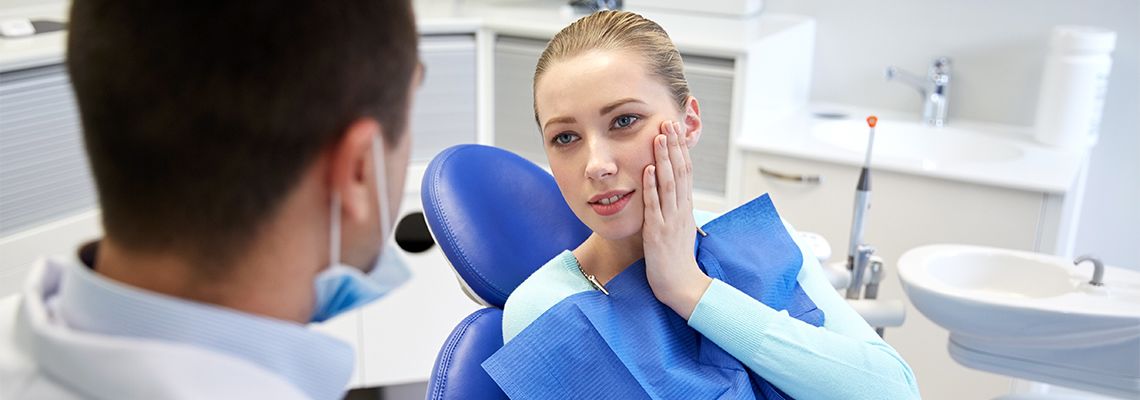Dental malpractice can cause significant harm, whether it's due to a misdiagnosis, improper treatment, or negligence during a procedure. If you’ve experienced this in Maryland or Washington, D.C., understanding how to report dental malpractice and the steps involved can protect your rights.
To The Highest Standards
Schedule a Free Consultation Today

How Do You Prove Dental Negligence?
Proving dental negligence is a complex process that requires a comprehensive understanding of legal definitions, clinical standards, and the specifics of each unique case. Dental negligence occurs when a dentist fails to deliver the expected standard of care, resulting in harm to the patient. In order to establish a claim of dental negligence, it's important to understand the types of evidence required, key concepts that underpin such a claim, and the role of valid documentation in supporting your case.
Understanding Dental Negligence
Dental negligence can be broadly categorized into several main areas, each relating to how a dentist can fail to meet the expected standard of care. Recognizing these categories is vital in establishing a foundation for your case. Common incidents that typically lead to claims of negligence include:
Failure to diagnose: When a dentist does not identify dental conditions such as cavities, gum disease, or oral cancer, it can result in prolonged pain or more severe health issues.
Improper treatment: Errors in dental procedures, including extractions, root canals, or fillings, can lead to injury or worsened conditions.
Unsanitary practices: Using non-sterile instruments or operating in unclean environments can give rise to infections that might not have occurred had proper hygiene been followed.
Anesthesia errors: Misuse of anesthesia can generate unnecessary suffering for the patient, resulting in a claim for damages.
Informed consent issues: Failing to adequately inform patients of the risks associated with treatments may constitute negligence.
Understanding these nuances is critical for any patient considering legal action.
The Key Elements of Proving Negligence
To successfully prove dental negligence, the case must affirmatively demonstrate several key elements. These elements form the backbone of a viable legal claim and include:
1. Establishing Breach of Duty
A fundamental aspect of proving negligence is showing that the dentist had a duty to provide care and that this duty was breached. Elements to assess within breach of duty include:
Standard of care: Did the dentist adhere to the professional standards expected within the field? For example, did they perform treatments using appropriate techniques?
Documentation of treatment: It is essential to examine the dentist’s records and notes regarding the procedure to determine whether proper steps were followed.
Peer testimony: Sometimes, expert testimony from other dental professionals can help establish what the standard of care should have been and how it was not met.
2. Demonstrating Causation
Causation requires establishing a direct link between the dentist’s actions (or lack thereof) and the resulting harm. Key questions to address include:
Did the dentist’s actions directly cause your injury or pain? Gathering evidence that illustrates this connection may include other medical professionals' evaluations, expert testimonials, and personal accounts.
3. Quantifying Damages
It is critical to quantify the damages resulting from the alleged negligence. This includes:
Physical pain and suffering: Document specific instances of discomfort experienced due to the dental negligence. This may involve detailed descriptions of your symptoms and their impacts on your daily life.
Emotional distress: Many patients suffer emotional distress following inadequate dental care, ranging from anxiety to depression. Documenting these effects might require assessments from mental health professionals.
Additional medical expenses: Highlight any extra treatments, medications, or corrective surgeries needed to address the complications from the original negligent care.
Understanding how these damages connect to the dentist's failure to meet the standard of care strengthens your case considerably.
Collecting Evidence to Support Your Claim
A crucial component of proving negligence is the rigorous collection and preservation of evidence. This may involve several methods:
Dental records: One of the first steps is to obtain your dental records. This includes details of treatments performed, prescriptions given, and follow-up visits. These documents establish a timeline and showcase the dentist’s approach to your care.
Medical records: If your dental negligence has led to additional medical complications, gather records that document these treatments and any healthcare providers involved.
Expert witnesses: Consulting with dental experts provides invaluable insights into the norms of care. Expert opinions can clarify what standards of practice were breached and the implications of those breaches.
Photographs and other documentation: Photographic evidence can be compelling, whether that includes images of your injuries or documentation of poor treatment situations. Gathering a visual account of your situation only enhances the narrative.
The Duty of Informed Consent
Informed consent is a significant aspect of dental malpractice cases. Dentists are ethically and legally obligated to inform patients of the potential risks and benefits associated with any procedure or treatment. If a patient was not adequately informed and subsequently suffered harm, a breach of duty may exist.
Key considerations here include:
Clear communication: Patients should receive clear explanations of the procedure, possible complications, recovery expectations, and alternative treatments.
Documentation of consent: Always ensure that the consent form is comprehensively filled out and includes all discussed risks. If there are discrepancies between what was documented and what was communicated to you, this can form a strong basis for a claim.
Consulting With an Experienced Attorney
Understanding and dealing with dental negligence claims can be intricate and overwhelming. A competent dental malpractice attorney can significantly impact the potency and direction of your case. They can assist in gathering evidence, coordinating expert witnesses, and outlining the most effective path forward.
Furthermore, they can help clarify legal definitions and ensure all documentation is appropriately managed. With their support, the burden of the legal criteria diminishes, allowing you to focus on recovery and peace of mind.
Advocate for Your Rights
Proving dental negligence is undoubtedly a multifaceted challenge, yet it is a pursuit that may restore justice and compensate for your pain and suffering.
If you believe you have experienced dental negligence, take the first steps to consult with a legal professional who can guide you through the process, offering the support and direction necessary to navigate these difficult circumstances.
RECENT POSTS
At The Law Offices of Fred B. Goldberg located in Columbia, Maryland, the firm understands the intricacies and challenges that come with pursuing a dental malpractice lawsuit. Dental malpractice cases can be difficult to manage, often involving intricate medical details and personalized legal guidance.




